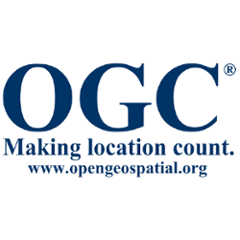Test suite: ets-security-client10
Scope
This executable test suite (ETS) verifies the conformance of the secure client behavior as the implementation under test (IUT) with respect to the following specification(s):
- OGC Web Service Security 1.0 (OGC-17-007)
Conformance testing is a kind of "black box" testing that examines the externally visible characteristics or behaviors of the IUT while disregarding any implementation details.
Several conformance classes are defined in the principal specification; the ones listed below are covered by this test suite:
- Conformance Class "Common Security" (abstract)
- Validation of secure client HTTPS usage
- Conformance Class "OWS Common"
- Only affects Capabilities document presented to secure client
- Conformance Class "WMS 1.1.1"
- Only affects Capabilities document presented to secure client
- Conformance Class "WMS 1.3.0"
- Only affects Capabilities document presented to secure client
Visit the project documentation website for more information, including the API documentation.
Note: project documentation site will be available when the test suite has been published to the OGC TEAM Engine site.
How to run the tests
The test suite is built using Apache Maven v3. Maven is necessary for self-hosting the test suite in your own test environment.
All of the test suite execution environments use the Test Run Properties to customize the parameters of the test session.
Test Run Properties
For IDE and JAR testing, an XML file is used to pass the test run properties into the test suite. TEAM Engine users will instead use the web form interface to specify these properties, and TEAM Engine will automatically convert the form into an XML file for the test suite.
More details about the mandatory and optional test run properties can be located in the documentation.
1. Integrated development environment (IDE)
Use a Java IDE such as Eclipse, NetBeans, or IntelliJ. Clone the repository and build the project.
Set the main class to run: org.opengis.cite.security-client10.TestNGController
Arguments: The first argument must refer to an XML properties file containing the required test run arguments. If not specified, the default location at ${user.home}/test-run-props.xml will be used.
The TestNG results file (testng-results.xml) will be written to a subdirectory in ${user.home}/testng/ having a UUID value as its name.
2. Command shell (console)
One of the build artifacts is an "all-in-one" JAR file that includes the test suite and all of its dependencies; this makes it very easy to execute the test suite in a command shell:
java -jar ets-security-client10-0.1-SNAPSHOT-aio.jar [-o|--outputDir $TMPDIR] [test-run-props.xml]
This will require you to first compile and build the test suite as a Java application.
3. OGC test harness
Use TEAM Engine, the official OGC test harness. The latest test suite release are usually available at the beta testing facility. You can also build and deploy the test harness yourself and use a local installation.
A detailed guide on setting up TEAM Engine is included in the site docs.
4. Docker
This test suite comes with a Dockerfile which can be used to easily setup the OGC test harness with the test suite. Details can be found on https://github.com/opengeospatial/cite/wiki/How-to-create-Docker-Images-of-test-suites#create-docker-image-and-create-and-start-docker-container[Create Docker Image and create and start Docker Container].
How to contribute
If you would like to get involved, you can:
- Report an issue such as a defect or an enhancement request
- Help to resolve an open issue
- Fix a bug: Fork the repository, apply the fix, and create a pull request
- Add new tests: Fork the repository, implement and verify the tests on a new topic branch, and create a pull request (don't forget to periodically rebase long-lived branches so there are no extraneous conflicts)
